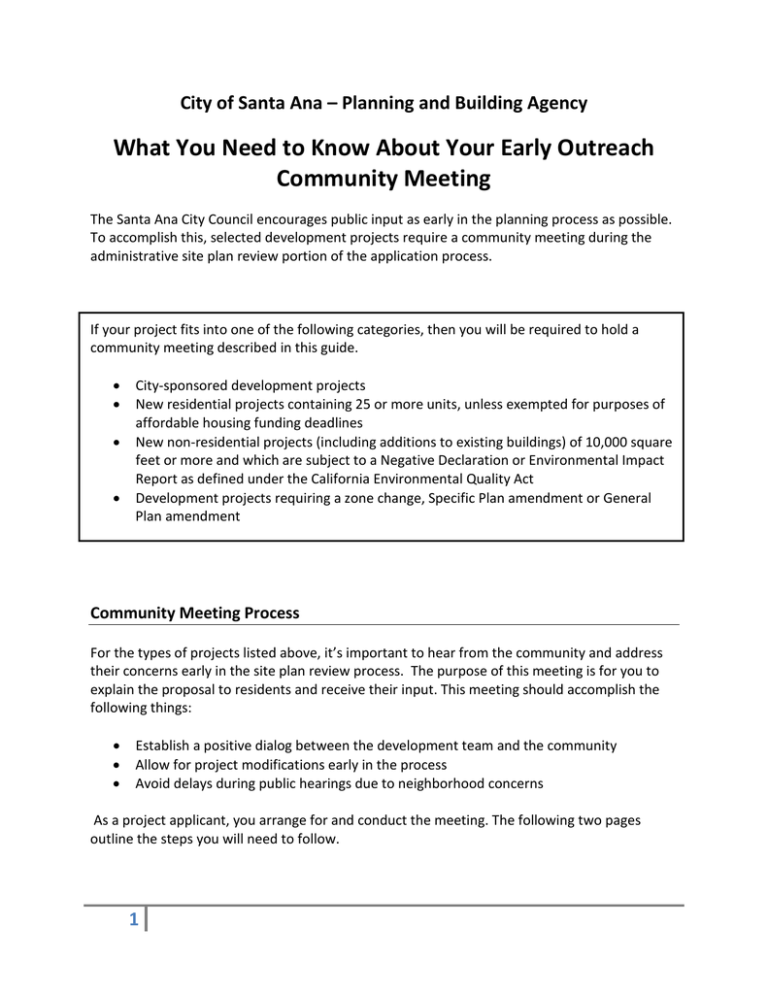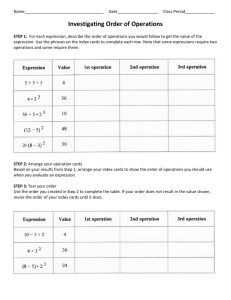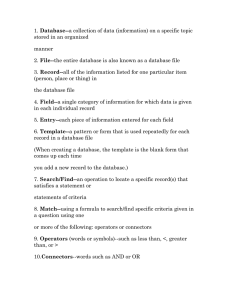Sunshine Ordinance - Guide to Community
advertisement

City of Santa Ana – Planning and Building Agency What You Need to Know About Your Early Outreach Community Meeting The Santa Ana City Council encourages public input as early in the planning process as possible. To accomplish this, selected development projects require a community meeting during the administrative site plan review portion of the application process. If your project fits into one of the following categories, then you will be required to hold a community meeting described in this guide. • • • • City-sponsored development projects New residential projects containing 25 or more units, unless exempted for purposes of affordable housing funding deadlines New non-residential projects (including additions to existing buildings) of 10,000 square feet or more and which are subject to a Negative Declaration or Environmental Impact Report as defined under the California Environmental Quality Act Development projects requiring a zone change, Specific Plan amendment or General Plan amendment Community Meeting Process For the types of projects listed above, it’s important to hear from the community and address their concerns early in the site plan review process. The purpose of this meeting is for you to explain the proposal to residents and receive their input. This meeting should accomplish the following things: • • • Establish a positive dialog between the development team and the community Allow for project modifications early in the process Avoid delays during public hearings due to neighborhood concerns As a project applicant, you arrange for and conduct the meeting. The following two pages outline the steps you will need to follow. 1 1. Submit Your Site Plan Review Application to the Planning Division For this step you will follow the instructions in the Site Plan Review application checklist. A Planner will be assigned to help you with this process. 2. Set the Date and Time and Arrange for a Location Your community meeting has to be held within the first 20 days after you submit your site plan review application. Holding the meeting within this time period will ensure that members of the community have the earliest opportunity to comment on your project and will help you to avoid delays in the processing of your application. Your community meeting should be held either on a weeknight during the early evening hours or on a Saturday. The meeting must be held in any facility that is accessible to the public and that is no more than 1 mile from the project site. If this type of facility isn’t available, you may instead arrange, at your own expense and subject to availability, to use a City facility that is closest to the project site. 3. Obtain the Mailing List You will need to notify at least one occupant per dwelling unit having a valid US Postal Service address within a 500 foot radius of the project site, as well as all property owners within the 500 foot boundary. You will need to arrange to have the mailing list prepared by either a private address list company or other service capable of creating such a mailing list. 4. Prepare and Send Meeting Notices The notice you prepare shall include the following items: • The time, place and date of the community meeting • A map depicting the location of the subject property, including the properties contained within the notification boundary • A brief description of the project • Your contact information The notice must be written in English and Spanish and include instructions as to how to request language interpretation services for those wishing to have interpretation during the community meeting in languages other than English. The notice must be mailed no less than 10 days before the meeting. 2 5. Post and Publish Meeting Notices In addition to mailing the notices of the community meeting, you will also need to post a notice on the project site and publish the notice in a local newspaper. Your case planner will provide you with a template for the public notice and instructions about publishing your notice in the newspaper. You may wish to augment any of these required notices with alternative forms of communication, such as e-mail, websites and hand distributed fliers. 6. Prepare for the Meeting You will need to have presentation-sized graphics prepared of the conceptual project plans, including at least a site plan and exterior elevation drawings. Colored plans are easiest for the public to understand and you are encouraged to use them. If any members of the public have requested translation services in advance, you will need to arrange to have an interpreter available during the meeting. Requests for language interpretation services must be made in writing and submitted to you no later than 48 hours prior to the meeting. 7. At the Meeting When community members arrive you may find it helpful to provide them with name tags and offer them a sign-in form so that you may contact them later to give them project updates or responses to specific questions. It is not mandatory that they provide you with their names or contact information. During the community meeting you will give a presentation detailing the components of the proposed development project and a description of any impacts or benefits to the community. Following your presentation members of the public should have ample opportunity to ask questions and provide feedback. You will need to prepare a detailed written record of the meeting. 8. After the Meeting Following the meeting you will need to provide the Planning Division a written record of the comments you received at the meeting, as well as responses to questions and suggestions that were posed. You must provide this within four days after the meeting. You will also need to submit an affidavit under penalty of perjury that the required community meeting was held in compliance with this section along with copies of all notices, notification lists, meeting sign-in sheets if available, site postings, advertisements, or other communications used to publicize the meeting. Staff will include the meeting minutes and responses as attachments to the administrative site plan review comments and will make them available on the City’s website. 3 Date prepared: 12-13-2012

